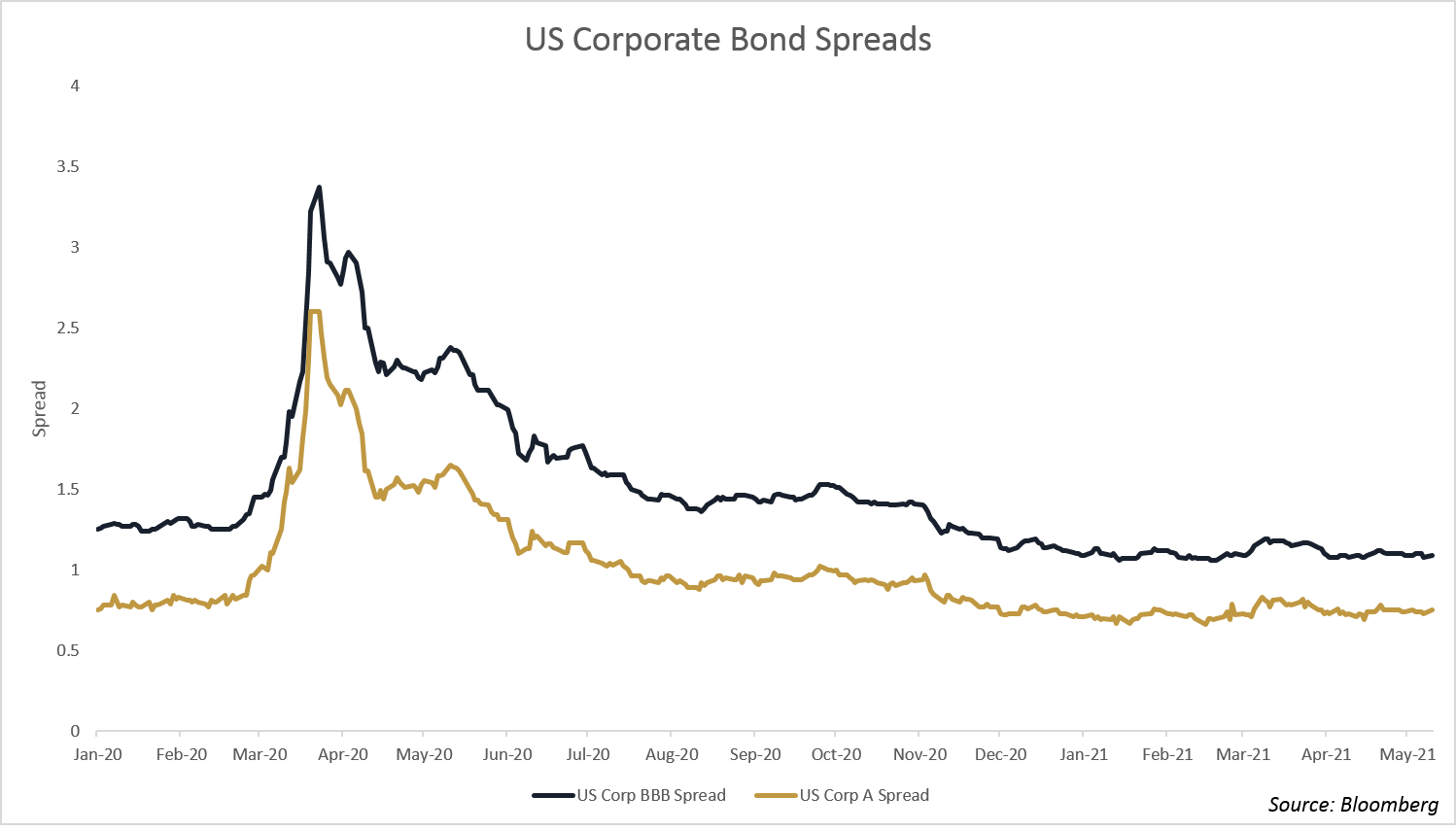COVID credit review - 12 months on

Alexander Funds Management
While the health impact of COVID-19 across the globe continues to devastate, one could be forgiven for looking at the response of financial markets in the last 12 months and conclude it was firmly in the rear vision mirror. This includes credit markets, where the rally post March has been significant.

Whatever your view on the direction of the global economy and financial markets from here, the benefit of 12 months hindsight from March 2020’s volatility and the subsequent rally has reiterated some key insights into credit markets.
Credit markets are systemically important
A decade of supporting the economy and markets through a range of unconventional monetary policies left Central Banks well placed to react swiftly and meaningfully to the economic impact of COVID-19. Domestically, in addition to reducing the overnight cash rate, the RBA launched the Term Funding Facility (TFF) to further reduce ADI funding costs and support lending into the economy. The policy has been a success in lowering lending costs and supporting activity. However, ripple effects have been felt in the credit markets which are now effectively competing with the government to provide funding to the banks. This had 2 major impacts:
- A lack of new senior debt issuance by major banks left investors with a smaller universe to invest new money and bond maturities
- The spread of existing bank senior debt contracted sharply reflecting the 0.25% on offer from the TFF (further reduced to 0.1% in October). This cascaded into other segments of the credit market and helped support a sustained rally from early April 2020 to today.
In addition, programs specifically designed to support the Non-Bank Lender market (NBL) positively impacted the securitised segment, Residential Mortgage Backed Securities (RMBS) and Asset Backed Securities (ABS), of the credit market.
NBL’s are a growing and necessary provider of the credit that keep the wheels of the economy turning. The federal government (again) recognised this during COVID-19 when the Australian Office of Financial Management (AOFM) quickly implemented 2 key programs to support the sector.
The Structured Finance Support Fund was launched in March 2020 to provide up to $15 billion in financing to smaller lenders who access finance through securitisation. Once launched, the AOFM began actively supporting the market through participation in primary term deals, buying securitised bonds in the secondary markets and investing directly into funding warehouses. Ultimately, the AOFM was only required to allocate a fraction of the $15 billion capacity ($3.66 billion at 31 March 2020) to quickly return the RMBS/ABS market to near normal functioning.
The Forbearance SPV is designed to help support the capacity for small lenders to make forbearance provision for COVID-19 related hardship cases among their borrowers. This program provided an important liquidity cushion for NBL’s to manage through transitory hardship.
Both of these programs were key signals to the credit market that the government understood the importance to the long term health of the economy of maintaining a vibrant NBL sector. This was subsequently reflected in market activity and pricing within RMBS and ABS markets.
Liquidity is variable
In a desire to link portfolio expectations with enduring core assumptions, investors are prone to search out simplicity. While core investment beliefs should be simple and timeless, the markets are not. As COVID-19 demonstrated, when the market panic begins, what was immediately liquid a week ago may now struggle to find a buyer at an acceptable price. Over-the-counter markets are particularly prone to this type of liquidity surprise as there is no centralised dealing exchange and pricing is not publicly available. Understanding the role you expect credit to perform in your portfolio is critical, as in a crisis, any credit securities outside of senior bank debt will likely suffer a material deterioration in secondary liquidity.
Most investors inherently understand this but are still surprised when over-the-counter strategies that have been paying 2-3% above cash have a different level of liquidity during a crisis. In the midst of the hand wringing post-crisis, the question that often gets lost is; what is the opportunity cost of that liquidity? While there is no formula for how often market panics will occur – unless you hold a core belief they will occur at a more regular rate than history – sacrificing portfolio returns to hold a larger amount of cash required to meet short term needs can dilute long term portfolio outcomes.
Sustained good times in risk markets tend to leave investors complacent about the variability in market liquidity, while a crisis leaves them paranoid about not having enough. It will come as no surprise that the premium for illiquidity within the credit universe is now substantial, rewarding those investors who can manage and appropriately price it.
Credit markets are inefficient
Even with the broad tailwinds provided by central bank support, credit markets remain inherently inefficient. Typically, immediately post an event of significant volatility, the most prospective opportunities initially present in the public market and subsequently in the private space. Credit markets post March followed this pattern, with primary issuance in the public debt space over May to August offering healthy new issue premium. Since then, credit investors that are also able to source, execute and manage private opportunities have enjoyed the benefit of an expanded illiquidity premium over increasingly expensive public debt markets.
Overall the COVID-19 impact on financial markets has been at odds to consensus expectations during March 2020, with many of the second and third order effects still to reverberate through the system. However, overall in credit the asset class performed as generally expected through periods of extreme volatility, namely a mild draw down relative to equities coupled with some deterioration in market liquidity and then followed by a period of increased inefficiency and opportunity.
Never miss an insight
Enjoy this wire? Hit the ‘like’ button to let us know. Stay up to date with my content by hitting the ‘follow’ button below and you’ll be notified every time I post a wire.
Not already a Livewire member? Sign up today to get free access to investment ideas and strategies from Australia’s leading investors.
5 topics

Adam has over 20 years' experience managing assets across multiple security types, including bonds, loans, structured credit and credit derivatives. He was previously Senior Portfolio Manager at VFMC managing their directly invested credit...
Expertise

Adam has over 20 years' experience managing assets across multiple security types, including bonds, loans, structured credit and credit derivatives. He was previously Senior Portfolio Manager at VFMC managing their directly invested credit...
